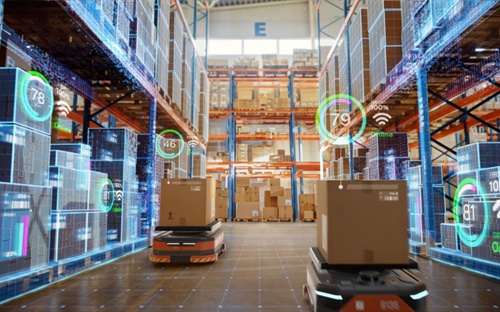In the realm of logistics, the evolution of warehousing stands as a pivotal driver of operational efficiency and customer satisfaction. The future of warehousing is being shaped by three profound trends, each revolutionizing the landscape and redefining the way goods are stored, managed, and distributed.
Three Key Trends Driving the Evolution of Warehousing
Automation and Robotics
Automation and robotics have emerged as game-changers in warehouse management. Robotics streamline repetitive tasks, such as picking, packing, and sorting, significantly reducing human intervention and enhancing accuracy. Automated guided vehicles (AGVs) and robotic arms work seamlessly alongside human labor, optimizing productivity and efficiency.
These technologies are not merely futuristic concepts; they are actively transforming warehouses globally. From Amazon's Kiva robots to autonomous forklifts, the integration of robotics minimizes errors, increases speed, and allows warehouses to operate around the clock, setting new benchmarks for efficiency.
Data Analytics and IoT Integration
Data analytics coupled with the Internet of Things (IoT) is revolutionizing how warehouses operate. IoT devices collect real-time data on inventory levels, equipment performance, and environmental conditions. This data, when analyzed using advanced analytics, empowers warehouse managers with actionable insights, enabling predictive maintenance, demand forecasting, and efficient inventory management.
Smart sensors and RFID tags track products throughout the supply chain, providing granular visibility. This level of data-driven decision-making optimizes storage, reduces waste, and enhances overall operational efficiency, laying the foundation for smarter, more adaptive warehouses.
E-commerce Fulfilment Centres
The surge in online shopping has led to the rise of specialized e-commerce fulfilment centres. These warehouses are strategically designed to cater to the unique demands of online orders, emphasizing rapid order fulfilment and last-mile delivery efficiency. E-commerce fulfilment centres prioritize proximity to consumers, leveraging smaller, strategically located hubs to enable quicker deliveries.
These centres are not merely storage spaces; they are sophisticated facilities incorporating technology for seamless order processing, often utilizing robotics and AI-powered systems to expedite order picking and shipping. The focus on speed and accuracy is reshaping the logistics landscape, shaping a new paradigm for modern warehousing.
Implications for the Future of Warehousing
The convergence of these trends signifies a paradigm shift in warehousing practices. The future warehouse will be characterized by interconnected systems, where automation, data analytics, and e-commerce centricity converge. Warehouses will evolve into intelligent hubs, driven by data insights, automated processes, and a relentless focus on customer satisfaction.
Conclusion
As warehouses evolve into high-tech, data-driven centres of efficiency, the logistics industry is poised for significant transformation. Embracing automation, leveraging data analytics, and adapting to the demands of e-commerce fulfilment centres will be pivotal for companies seeking to stay ahead in an increasingly competitive market. The future of warehousing isn't just about storage; it's about innovation, adaptability, and redefining logistics as we know it. Embracing these trends will be critical for businesses aiming to thrive in the future landscape of warehousing and logistics.


No comments yet